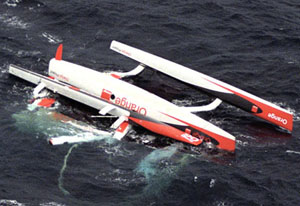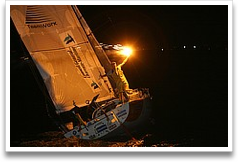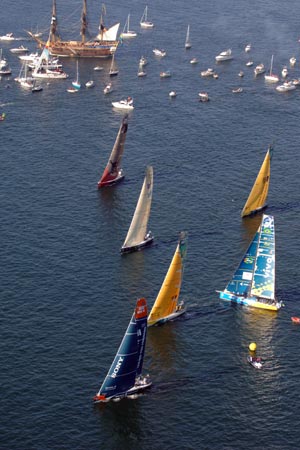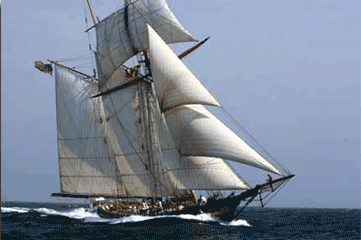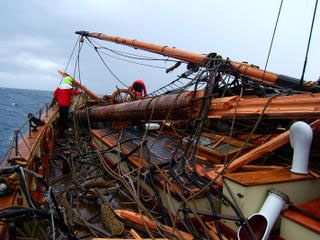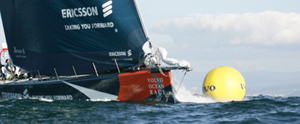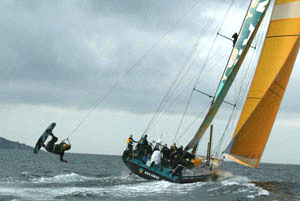60-Foot Tris at 50% Attrition in Transat Jacques Vabre
Posted by John Callender on November 12th, 2005 at 6:44 amA nasty storm a couple of days ago in the Bay of Biscay, followed by ongoing mayhem from strong tradewinds, have knocked out 5 of the 10 60-foot trimarans competing in the doublehanded transatlantic race currently under way between Le Havre, France, and Bahia, Brazil.
Here’s a writeup from Latitude 38 with aerial photos of the capsized Orange Project and Foncia: Snap, crackle and pop at Transat Jacques Vabre.
As if starting the biennial doublehanded transatlantic race in 25+ knot, on-the-nose winds and rough seas weren’t enough for the 19 monohulls (Saturday start) and 16 multis (Sunday start), Sunday night a cold front rolled in, blasting primarily the multihull fleet with 35 to 45-knot winds and reported 20-ft seas. In the wee hours of Monday, EPIRBs went off on the 60-ft trimarans Sodebo and Orange Project. The former snapped off its port ama and capsized. The latter suffered a broken main beam and also went upside down. Three hours later, at 0615, a report came in that Foncia had also capsized. With the retirement of Brossard earlier on Sunday with a cracked main hull, that takes four of the ten 60-ft multis out of the running. The six co-skippers of the three capsized boats were rescued, some more banged and bruised than others but all okay. At this writing, their smashed boats were all either under tow back to land, or about to be.
Later, Groupama-2 pitchpoled (apparently) and capsized (definitely). Here’s a write-up from sail-world.com: At around 1750 GMT tonight, the 60ft multihull Groupama-2…
The prevailing conditions at the time were classic Trade wind 25 – 30 knots from the North East. The trimaran was sailing downwind and it is presumed that therefore the hull pitchpoled on capsize but this is not confirmed.
What we do know is that Franck Proffit was at the helm and was thrown violently forward, and has possibly broken his ribs. A helicopter has been sent from the Canaries to the zone to pick up Franck Proffit from the boat in order to give him immediate medical assistance.
Franck Cammas is staying on board in order to commence a salvage operation for the boat with his shore team. Groupama-2 had been pushing hard all day after their 5 hour pit-stop in Santo Porto at Madeira between 0400 – 0900 hrs local time this morning to repair their steering and rudder systems, and had been clocking average boat speeds over 25+ knots.
That brings to 5 (of 10) abandonments in the 60-foot trimarans of the ORMA class. Also retiring have been two of the Open 50 trimarans, and one of the Open 50 monohulls. So far the boats of the remaining class (Open 60 monohulls) have not suffered any retirements.
More info on the ongoing racing is available from the Transat Jacques Vabre official site. You can also check out cool realtime position maps of the survivors at the French-language site http://voile.esrifrance.fr/.
